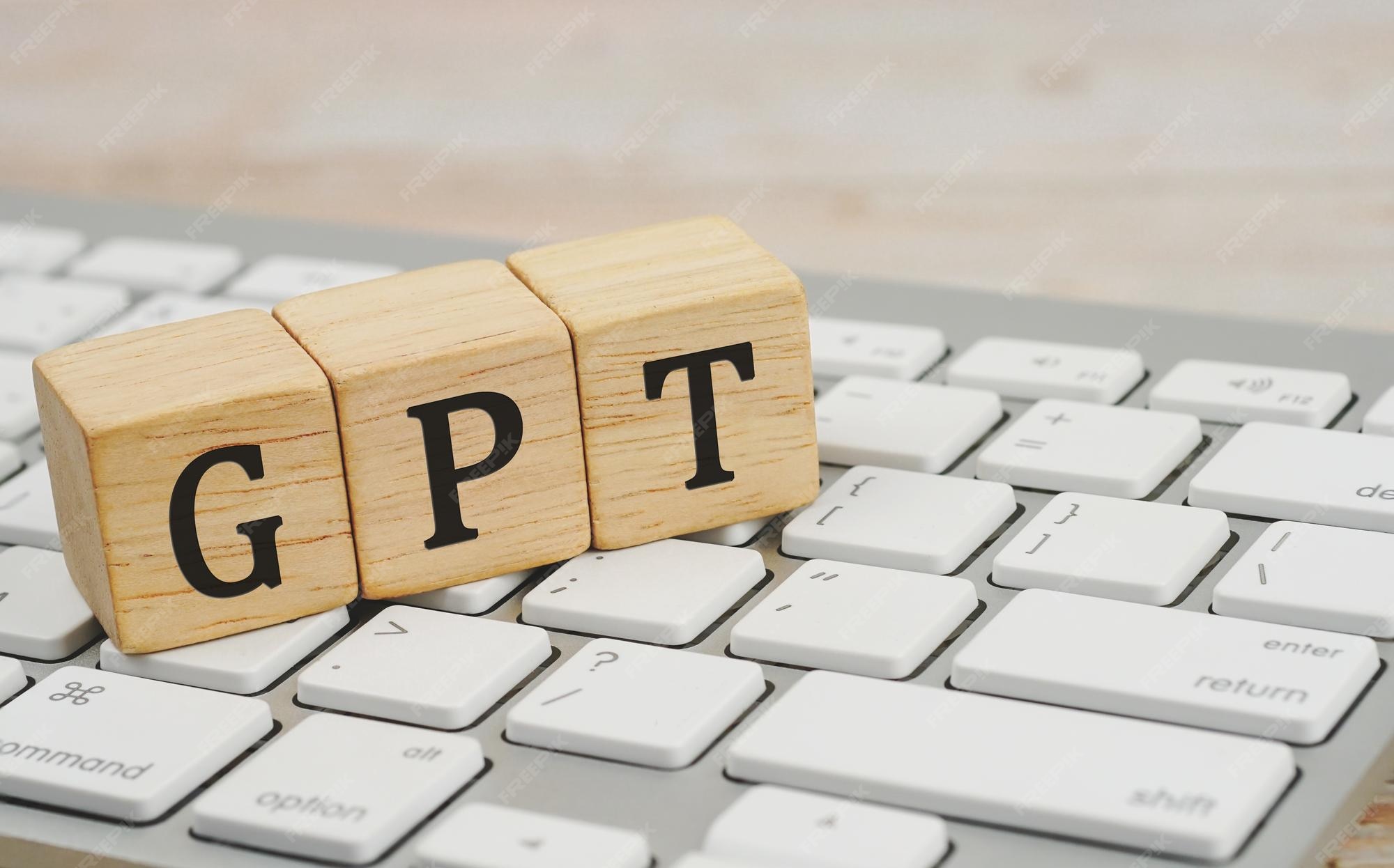
Image Source: FreeImages
Introduction to Chat GPT Stock Trading
In the world of stock trading, the ability to make quick and informed decisions can be the difference between reaping huge profits and suffering significant losses. With the rapid advancement of artificial intelligence (AI) and natural language processing (NLP), traders now have access to powerful tools that can help them stay ahead of the curve. One such innovation is Chat GPT stock trading, which leverages the capabilities of OpenAI’s GPT-3 model to offer valuable insights and predictions.
Chat GPT, or chat-based Generative Pre-trained Transformer, is an AI model that can engage in human-like conversations and generate human-like text. It has a wide range of applications, from chatbots and content generation to data analysis and predictive modeling. In the context of stock trading, Chat GPT can be used to develop sophisticated algorithms for identifying profitable trades, analyzing market trends, and making more informed decisions.
This comprehensive guide will explore the power of Chat GPT stock trading and show you how to build profitable algorithms using OpenAI’s advanced technology. We’ll cover the fundamentals of OpenAI and GPT-3, the role of AI in stock trading, and the advantages of using Chat GPT for stock trade systems. We’ll also discuss the challenges and risks associated with AI-driven stock trading and provide you with valuable learning resources to help you succeed in this exciting field.
Understanding OpenAI and GPT-3
OpenAI is an artificial intelligence research lab that aims to create safe and beneficial AI that can outperform humans in economically valuable tasks. Its team of talented researchers and engineers work on cutting-edge AI technologies, including the development of the groundbreaking GPT-3 model.
GPT-3, or Generative Pre-trained Transformer 3, is the third iteration of OpenAI’s language prediction model. It is one of the largest and most powerful AI models to date, boasting 175 billion parameters. The sheer scale and complexity of GPT-3 enable it to understand and generate human-like text with remarkable accuracy, making it an invaluable tool for applications like Chat GPT stock trading.
The model’s pre-training process involves learning from vast amounts of data, which helps it understand patterns, relationships, and nuances in language. This knowledge is then fine-tuned during the training phase, allowing GPT-3 to generate contextually relevant and coherent responses in a conversation or text generation task.
The Role of AI in Stock Trading
AI has had a transformative impact on the stock trading landscape, as it has the potential to analyze vast amounts of data at lightning-fast speeds, identify patterns and trends, and make intelligent predictions. Traders and investors can harness the power of AI to gain crucial insights into the financial markets and make better-informed decisions.
From algorithmic trading and robo-advisory services to sentiment analysis and predictive analytics, AI is revolutionizing various aspects of the trading process. It enables traders to automate time-consuming tasks, minimize human errors, and exploit market opportunities more efficiently.
AI-driven tools like Chat GPT stock trading can help traders and investors stay ahead of the game by offering real-time market analysis, predicting stock price movements, and generating actionable insights. By incorporating AI into their trading strategies, traders can improve their decision-making processes and maximize their returns on investment.
Advantages of Using Chat GPT for Stock Trade Systems
There are several key advantages to using Chat GPT for stock trade systems, which include:
Enhanced Decision-Making
Chat GPT stock trading can provide traders with valuable insights and recommendations, allowing them to make more informed decisions. By analyzing historical data, current market trends, and news events, the AI model can generate accurate predictions and identify potential trading opportunities.
Improved Efficiency
AI-driven tools like Chat GPT can automate time-consuming tasks, such as data analysis and pattern recognition. This enables traders to focus on strategy development and execution, ultimately improving their overall efficiency.
Reduced Human Bias
Human emotions and biases can often lead to poor trading decisions. By leveraging the power of AI, traders can minimize the impact of emotions on their decision-making processes, leading to more rational and objective choices.
Customization and Adaptability
Chat GPT stock trading algorithms can be tailored to suit individual trading strategies and risk appetites. Traders can also adapt and refine their algorithms over time as market conditions change, ensuring that their trading systems remain relevant and effective.
Developing Profitable Algorithms with OpenAI
To develop profitable algorithms with OpenAI’s Chat GPT, traders should follow these key steps:
- Define your trading strategy: Before diving into algorithm development, it’s essential to have a clear understanding of your trading strategy, objectives, and risk tolerance.
- Acquire and preprocess data: Collect historical and real-time market data, as well as relevant news articles and sentiment data. Preprocess this information to ensure that it’s in a format suitable for training your Chat GPT model.
- Train your Chat GPT model: Fine-tune the GPT-3 model using your preprocessed data to develop a chat-based algorithm tailored to your trading strategy.
- Evaluate model performance: Test your Chat GPT stock trading algorithm using historical data to assess its accuracy and effectiveness. Make any necessary adjustments to improve its performance.
- Implement your algorithm: Once you’re satisfied with your algorithm’s performance, integrate it into your trading system and monitor its results in real-time.
Evaluating Chat GPT Stock Price Predictions
To evaluate the accuracy and reliability of Chat GPT stock price predictions, traders should consider the following factors:
- Historical performance: Analyze the algorithm’s past predictions to determine its success rate and overall effectiveness.
- Consistency: Evaluate the consistency of the Chat GPT model’s predictions across different market conditions and time frames.
- Risk-adjusted returns: Assess the algorithm’s ability to generate risk-adjusted returns that outperform the market or a relevant benchmark.
- Model explainability: Ensure that the Chat GPT stock trading algorithm can provide clear explanations and justifications for its predictions, allowing traders to understand the rationale behind its recommendations.
Integrating Chat GPT into Your Trading Strategy
To successfully integrate Chat GPT into your trading strategy, consider the following steps:
- Set clear objectives: Define your trading goals and determine how Chat GPT can help you achieve them.
- Choose relevant data sources: Identify the data sources that are most relevant to your trading strategy, such as historical price data, news articles, and sentiment data.
- Test and refine your algorithm: Continuously evaluate and adjust your Chat GPT stock trading algorithm to ensure that it remains effective and aligned with your trading objectives.
- Monitor performance: Regularly monitor the performance of your Chat GPT-powered trading system and make necessary adjustments to improve its effectiveness.
Risks and Challenges in AI-Driven Stock Trading
While AI-driven stock trading offers numerous benefits, it’s essential to be aware of the potential risks and challenges associated with this approach:
- Overfitting: AI models may be prone to overfitting, which occurs when the model is overly optimized for the training data and performs poorly on new or unseen data.
- Model degradation: The performance of AI models may degrade over time due to changing market conditions, requiring ongoing monitoring and adjustment.
- Data quality: Poor data quality can negatively impact the performance of AI-driven trading systems, making it essential to ensure that the data used for training and validation is accurate and reliable.
- Ethical considerations: The use of AI in stock trading raises ethical concerns, such as the potential for market manipulation and the impact on human traders.
Learning Resources for Chat GPT Stock Trading
To expand your knowledge and skills in Chat GPT stock trading, consider exploring the following learning resources:
- OpenAI’s website: Visit OpenAI’s website for comprehensive information on their AI models, including GPT-3.
- AI and trading blogs and forums: Engage with online communities dedicated to AI-driven stock trading to learn from experienced traders and share your insights.
- Online courses and tutorials: Take advantage of online courses and tutorials to learn more about AI, natural language processing, and algorithmic trading.
- Books and research papers: Dive into books and research papers on AI, NLP, and stock trading to deepen your understanding of the field and stay up-to-date on the latest advancements.
Future Developments in AI and Stock Trading
As AI continues to advance, we can expect even more sophisticated and powerful tools for stock trading. Future developments may include:
- Improved AI models: As AI research progresses, we can anticipate the development of more accurate and efficient AI models for stock trading.
- Integration with other AI technologies: Combining Chat GPT with other AI technologies, such as computer vision and deep reinforcement learning, may lead to even more advanced trading systems.
- More accessible AI tools: As AI becomes more widespread, we can expect a greater number of user-friendly tools and platforms for developing and implementing AI-driven stock trading systems.
Conclusion
AI-driven stock trading, particularly Chat GPT stock trading, offers traders and investors a powerful means of gaining valuable insights, making more informed decisions, and ultimately improving their overall returns. By understanding the fundamentals of OpenAI and GPT-3, the advantages of using Chat GPT for stock trade systems, and the steps involved in developing profitable algorithms, you can unlock the potential of this cutting-edge technology and revolutionize your trading strategy.

